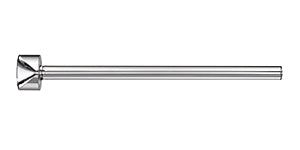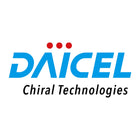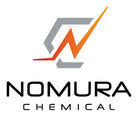Spectro EOP Demountable Torch Injector Tube 2.0mm
Glass Expansion Part Number: 31-808-3847
Torch options for Spectro design demountable torch:
| SAFEGLOVE-lge | Safety Gloves, Large |
| SAFEGLOVE-med | Safety Gloves, Medium |
| SAFEGLOVE-sml | Safety Gloves, Small |
| 30-808-1135 | Spectro EOP Demountable Flared End Torch Tube Assembly |
| 30-808-0965 | Spectro EOP Demountable Torch Tube Assembly |
| 31-808-3861 | Spectro EOP Demountable Torch Tube 142mm |
| 31-808-3848 | Spectro EOP Demountable Torch Injector Tube 1.8mm |
| 31-808-3847 | Spectro EOP Demountable Torch Injector Tube 2.0mm |
| 31-808-1034 | Spectro EOP Demountable Torch Injector Tube 2.5mm |
D-Torch Demountable Torch
The D-Torch is a revolutionary new demountable torch design. It provides the benefits of a fully demountable torch at a significantly lower cost.
The benefits of the D-Torch include:
- Demountable outer tube - why replace the entire torch when just the outer tube wears? With the D-Torch, you need only replace the outer tube. And most operators will be saving money after only two replacements.
- Interchangeable quartz and ceramic outer tubes.
- Much lower cost than other demountable torches.
- Interchangeable injectors - choose the optimum injector for your application. Select from quartz for aqueous solutions, narrow bore for organics, wide bore for high dissolved solids or ceramic for HF.
The Benefits of a Ceramic Torch
Glass Expansion pioneered the design of ceramic torches more than 25 years ago with the PT2000 demountable torch for the ARL Maxim ICP-OES. Since then we have provided ceramic versions of our PT2000 and ABC demountable torches for several ICP models.
Ceramic outer tubes are now available for the D-Torch. In general the ceramic outer tube has a much longer lifetime, greatly reducing interruptions and downtime due to torch failure. The ceramic outer tube is of particular benefit for:
a) the analysis of wear metals in engine oils, where quartz outer tubes often suffer from short lifetime.
b) Si determinations, where quartz outer tubes often produce high background signals.
c) fusion samples or samples with high levels of dissolved solids which cause quartz tubes to devitrefy.
Product title
Vendor
|
Product title
Vendor
|
Product title
Vendor
|
Product title
Vendor






